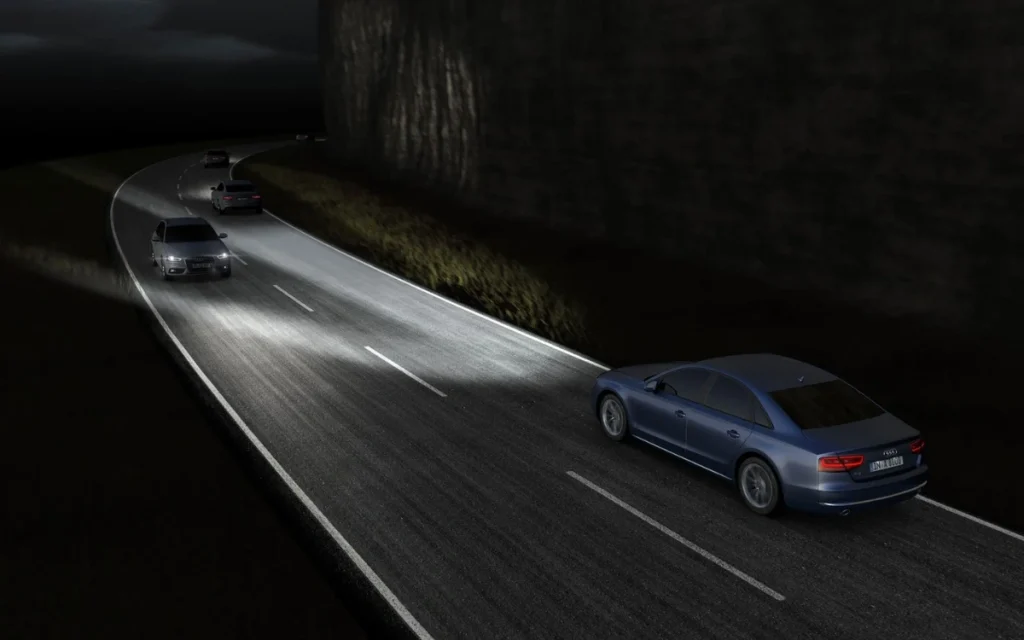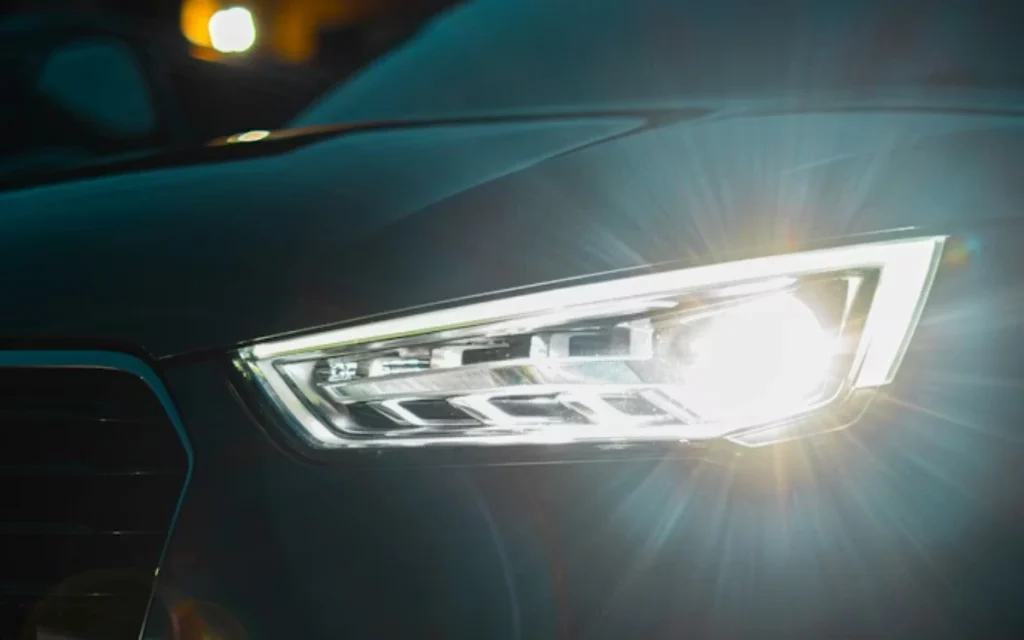This is why headlights are particularly bad in America compared to the rest of the world
Published on Nov 22, 2025 at 3:21 PM (UTC+4)
by Jason Fan
Last updated on Nov 20, 2025 at 5:33 PM (UTC+4)
Edited by
Mason Jones
LED matrix headlights should be lighting the way forward for American drivers, but thanks to an obscure law called FMVSS 108, the US is stuck in the Stone Age.
While the rest of the world enjoys headlights that behave like tiny illuminated wizards, drivers in America are still wrestling with what feels like ancient technology.
After all, it’s frustrating to be stuck in ‘high beam or low beam, pick one’, when the rest of the world are allowed to use digital headlights that can constantly reshape itself in real time.
It’s the equivalent of owning a smartphone, but only being allowed to use it as a calculator.
SBX CARS – View live supercar auctions powered by Supercar Blondie
What are adaptive headlights?
To understand the current situation, it helps to know what LED matrix headlights actually do because they’re brilliant.
Instead of being one big beam, they’re made up of multiple individually controlled LEDs.
That means the car can constantly reshape its beam pattern in real time, letting you drive with full high beams all the time without blinding anyone else.

The system senses oncoming traffic, dips just the part of the beam that would dazzle them, and leaves the rest blazing away.
Some systems can even carve out shapes around pedestrians, highlight signs, or widen the beam in poor weather.
FMVSS 108 is a rather outdated rule
So why can’t Americans have nice things?
Enter Federal Motor Vehicle Safety Standard No. 108 (or FMVSS 108), a regulation written long before cars could think for themselves.
Historically, US safety rules required headlights to have just two fixed modes: high and low.

Adaptive systems didn’t fit neatly into that binary setup, and the law didn’t account for light sources that could automatically adjust patterns dozens of times per second.
Automakers like Audi, BMW, and Mercedes spent years selling their smartest headlight tech everywhere except the US, waiting for regulators to catch up.
The National Highway Traffic Safety Administration finally updated the rules to allow adaptive driving beams in 2022, but implementation is slow and tied to outdated performance tests.
Translation: the tech is technically legal, but manufacturers still have to jump through design and certification hoops before rolling it out in the States.
While some companies like Tesla has finally introduced its own adaptive headlights, it will take a long time for every car on the street to be equipped with the new technology.
This is particularly annoying because LED headlights are increasingly common, and without the adaptability provided by smart headlights, they simply end up blinding drivers.
Here’s to hoping that more carmakers will hop on the trend soon, so that driving at night can be a little less hazardous.
DISCOVER SBX CARS: The global premium car auction platform powered by Supercar Blondie
Jason Fan is an experienced content creator who graduated from Nanyang Technological University in Singapore with a degree in communications. He then relocated to Australia during a millennial mid-life crisis. A fan of luxury travel and high-performance machines, he politely thanks chatbots just in case the AI apocalypse ever arrives. Jason covers a wide variety of topics, with a special focus on technology, planes and luxury.




